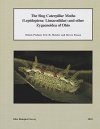World / Checklist Flora / Fauna
By: Dennis Profant(Author), Eric H Metzler(Author), Steven Passoa(Author)
66 pages, 6 plates with colour photos and 2 plates with colour illustrations; colour & b/w photos, b/w illustrations, b/w distribution maps
![The Slug Caterpillar Moths (Lepidoptera: Limacodidae) and other Zygaenoidea of Ohio The Slug Caterpillar Moths (Lepidoptera: Limacodidae) and other Zygaenoidea of Ohio]()
Click to have a closer look
About this book
Customer reviews
Related titles
About this book
Through a coordinated effort, The Ohio Lepidopterists, in cooperation with the Ohio Division of Wildlife, initiated a comprehensive survey of the Lepidoptera of Ohio in 1985. This survey produced hundreds of new county records on the distribution of Ohio Lepidoptera including many species not previously known to occur in the state. Based on this survey and on an intensive search for other specimens of Lepidoptera from Ohio, 700 individual records were found for the Superfamily Zygaenoidea. This publication on the Zygaenoidea of Ohio continues a series of reports documenting the occurrence of Lepidoptera in Ohio.
The Zygaenoidea are often recognized by their larvae which may be brightly colored, aposematic, or cryptic. The larvae of many species have setae containing skin irritants which may cause a painful reaction in human skin. The adults of 24 species of Zygaenoidea from Ohio are discussed and illustrated, along with many of the larvae. Three species which may someday be found in Ohio are also illustrated. Geographical and temporal distributional data for the species from Ohio are depicted.
A systematic checklist is provided for the 24 species, in four families, of Zygaenoidea in Ohio: three species of Zygaenidae (Smoky Moths), two species of Megalopygidae (Flannel Moths), 18 species of Limacodidae (Slug Caterpillar Moths), and one species of Epipyropidae (Plant-hopper Parasite Moths). The family Lacturidae (recorded from Kentucky) is included in the systematic checklist. The annotated checklist cites references to illustrations ofthe species in the literature, lists known larval hostplants, gives geographical distributional maps for each species in Ohio, uses graphs to depict the seasonal flights for each species, and presents information regarding the status, in Ohio, of each species.
The relative abundance of each species is reported. Other lists include a glossary of terms, an index, and a list of publications, although not cited, for the reader wanting more information about Zygaenoidea. The reported larval hostplants and substrates are presented alphabetically by plant family, and by common and scientific names within plant families. The authority for plant names is Gleason and Cronquist (1991). Black and white figures illustrate the micro-structures of some larvae. Two color plates illustrate 28 species of adult moths. Two color plates reproduce color renditions of life histories by Harrison G. Dyar, and four color plates show photographs of larvae.
Customer Reviews
World / Checklist Flora / Fauna
By: Dennis Profant(Author), Eric H Metzler(Author), Steven Passoa(Author)
66 pages, 6 plates with colour photos and 2 plates with colour illustrations; colour & b/w photos, b/w illustrations, b/w distribution maps


































